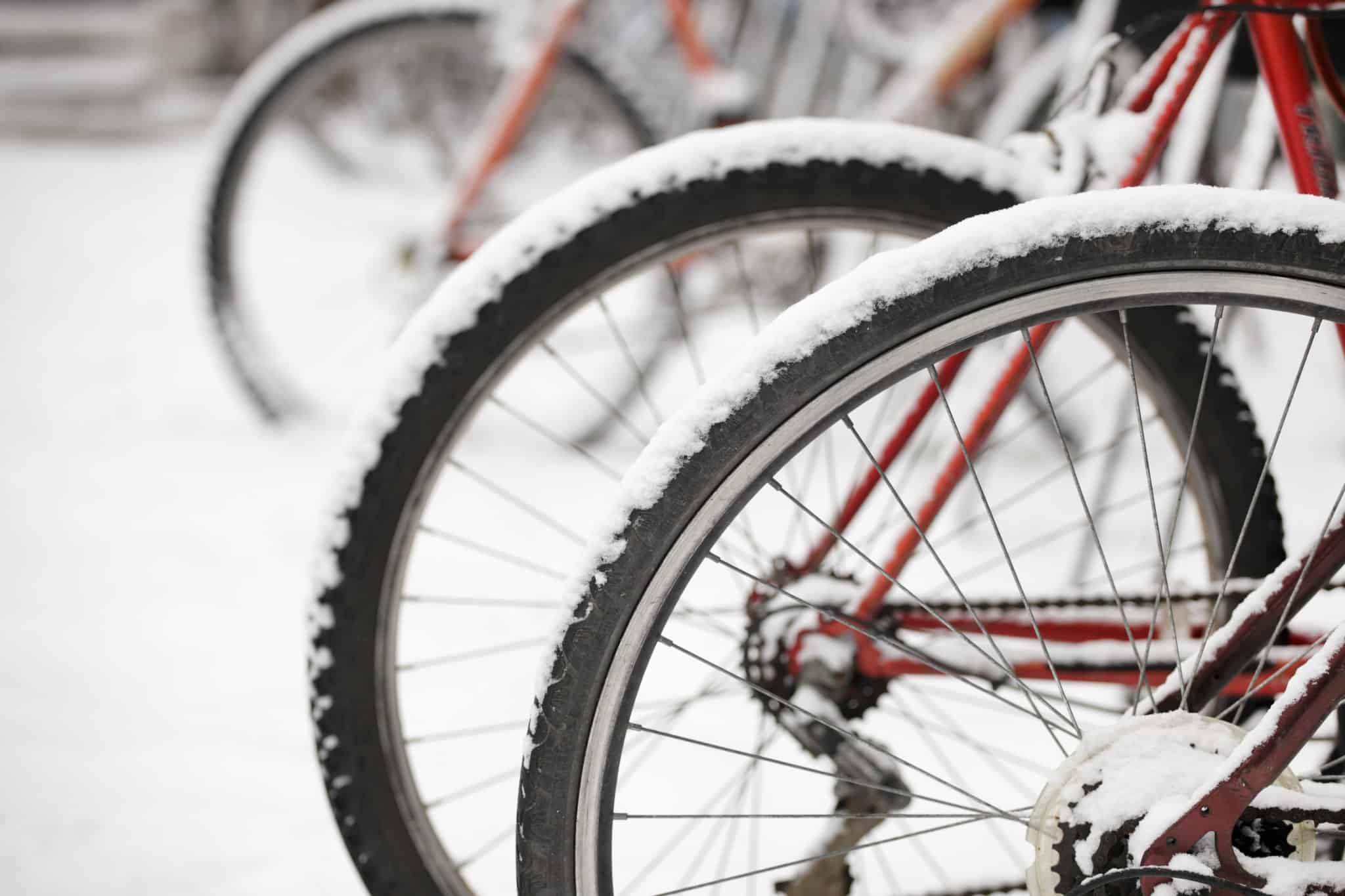

The COVID-19 pandemic has changed many elements of daily life in Ontario, including our transportation habits. During the warm summer months, many city dwellers elected to walk or cycle rather than take public transit or use ride-sharing options such as taxis to get around.
Although Ontario’s high vaccination rates are helping to reduce infections, we can still expect that many recreational cyclists who would normally put their bikes away for the winter will consider extending their riding season into the early winter, or even later. Whether you are an experienced winter road warrior, or are considering cycling as an alternative transportation method during the pandemic, there are several safety factors to consider when hitting the road while braving winter weather.
Many lawyers and law clerks at Howie, Sacks & Henry are avid cyclists, and we have also represented numerous clients who were injured while biking. These are the precautions we take when we head out for a cold-weather ride:
Make sure your bike is built for winter road conditions
The most important safety consideration is your bike itself as certain types of bikes are better for winter riding. The fat style bikes with larger tires are optimal for these conditions. Winter weather can be very hard on bikes, so rather than continuing to use your primary bike, consider purchasing a second-hand all-purpose bike for winter weather, or drag that long-forgotten mountain bike out of the garage and put winter tires on it.
Be sure your bike is properly maintained
While it is common to do a summer check-up, you should perform another one prior to the winter if you intend to ride in these conditions. Be aware that ongoing supply chain issues may make it difficult to source new parts and accessories – it’s a good idea to get your bike checked early in the season. Inexperienced winter cyclists sometimes forget to adjust tire pressure for colder conditions. Just like winter tires on your car, bicycle tires should be in contact with as much of the road surface as possible. Reduce tire pressure to the lowest level possible without pinching a flat tire. This level will depend a lot on your weight and might take some experimentation. A pair of specially-designed studded tires is a very worthy investment if you intend to ride in snowy and icy conditions.
Check to ensure you have working lights (white in front and red in back) and be sure they are clean. Check your lights during your trip and wipe away any slush or dirt that accumulates.
Slush and street salt can cause corrosion and break down bike components a lot faster than regular summer wear and tear. Wash your bike off after each ride or, at a minimum, wipe it down with a dry towel or baby wipes. A bike wash or wipe down should always be done inside your garage or home, or somewhere that is protected from the elements. If you will be storing your bike outside, be sure that it is completely dry before putting it outside overnight.
While you should never use WD-40® as a bike lubricant (there are specialized lubes available at cycling shops for a bike’s moving parts) some cyclists recommend spraying it on the bike frame to repel ice and grime accumulated during a winter ride. You can also spray it on your chain after the ride to get rid of excess moisture. Install fenders on your bike to keep as much of the slush and salt off of your body as possible.
Dress for the weather
Be sure to bundle up warmly – but beware the risk of overheating. It is recommended that you layer your clothing, starting with a warm base layer. As you ride, your body temperature will rise so it’s best not to be too warm and comfortable when you first step outside. If you are, you probably have too much clothing on and will become overheated as you ride. You will probably have to experiment a few times to get the right mixture of layered clothing that allows you to make adjustments.
Your hands and feet will tend to get cold first as your body focuses on keeping your core warm. Some avid winter riders wear disposable surgical gloves under their winter gloves to create an extra vapour layer between the skin and clothes. Air-activated heat packs can also be used inside shoes/boots and gloves. There are specialized winter cycling boots that can be purchased for the hardiest of outdoor winter riders.
Every cyclist should always wear a bike helmet and in the winter, ensure that it is sized to accommodate a hat. Some cyclists even wear ski helmets and ski goggles as the cold air will cause your eyes to water. Wear bright clothes for visibility, especially as drivers may not expect to see a cyclist. Avoid wearing white if conditions are snowy. If you are carrying liquids, ensure that they are in insulated flasks. It is not recommended that you keep a water bottle inside your coat as the layering will already make you bulky. As when driving a car or taking lengthy walks, you should always pack extra gear such as a hat and gloves, a flat tire change kit, and extra socks in case your feet get soaked.
Know your limitations
Be aware of your route and expected travel time before leaving home. Check the weather before you leave your home to ensure it is going to remain appropriate for your level of biking experience (and keep in mind that if you have a return trip, the weather may change for your return). Adjust your clothing and accessories accordingly. Be prepared for any emergencies or radical worsening of weather. If ever in doubt, leave your bike locked securely where you are and find a different way to travel, or just stay in.
Winter cycling is becoming more common, but remember that some drivers may not be expecting to see you on the streets, and slick, icy roads can make steering and braking more difficult for motor vehicles and bikes alike. Snow and ice can also obscure hazards on the road. Always use separated bike lanes when they are available, try to maintain a safe distance from cars on the road, and adjust your speed according to conditions.
Be wary when navigating around parked cars. Whenever possible, leave a one-meter space between your bike and the parked car, but be careful not to move into traffic without checking for other vehicles on the roadway. The risk of having a car door open suddenly into your path increases in the winter, when many drivers and passengers are not expecting bicycle traffic on the roads.
If you have any doubt about the safety of riding with cars present, just stop riding until conditions are clear. Regardless of who is at fault in an accident, the cyclist is guaranteed to lose any contest with an automobile so it is better to be safe than sorry.
Biking in snowy and icy conditions can be challenging, but by being cautious and well-prepared you can stay safe while cycling in a winter wonderland.
At Howie, Sacks & Henry we help cyclists and pedestrians who have been injured in a collision with a motor vehicle or other accident while travelling on icy roads. We would be pleased to speak to you about any cycling accident you have experienced, the nature of your injuries, and what benefits you might be entitled to claim. If you or a loved one have been injured in a motor vehicle accident, please contact Michael J. Henry at 416-361-0889, or mjhenry@hshlawyers.com.


